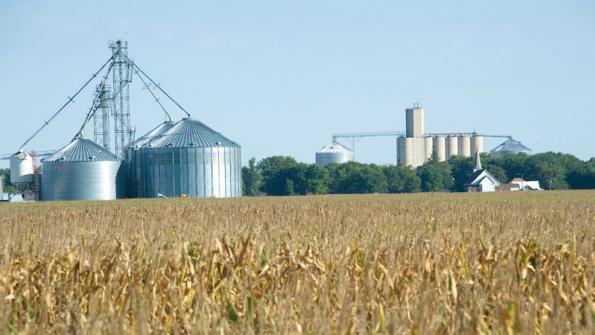
Now that grain prices have dipped below the break even mark, the next cost to decline is rental ground.
That was one of the major findings in a report out by Rabobank Aug. 16.
The report said that rent values need to begin dropping in 2017-2018 in order to balance with lower commodity prices over the long term. This will mean the value of land will also fall lower.
If rental costs don’t fall, then the land assets will face deeper devaluation because farmers will cut and abandon nutrient and crop protection programs.
Rental rates need to decline
From 2006-2013, an increase in commodity prices drove rental costs to increase. This was a result of the cost of inputs growing at a slower pace than commodity prices, according to Rabobank. However, by 2015, the farm level price for agricultural commodities had dropped below the cost of inputs.
According to Rabobank, land rents have not fallen because many farmers still had ample working capital from the profits made in 2006-2013. The availability of cash in the farm business and farmers’ desire to control land in the longer term, combined with land owners’ reluctance to accept reduced income have to led to bidding wars which has kept rental values above breakeven levels. As working capital dries up it will mean an end to the bidding wars for land at rates above the breakeven marks.
Land is the primary asset in the production of grains, the cost of land must reflect substantial long-term changes in profitability.
In the past funding from government programs helped to sustain breakeven margins with land rentals. However, lower government programs if any are expected. This means that without the government program funding, farmers will not see the same rental price support as in the past. For grain production to continue on the land, land rent levels must decline.
Rental cost reduction can be negotiated or rationalized
Landowners are going to have understand that either rental costs decline each year of a lease or the farmer could be forced to cut the cost of production inputs which will result in the depletion of nutrients or increased pests which will result in the degrading of the land value.
Another result could be that if the rent price remains too high then the landowner may be forced into taking all of the risk of farming the land through custom farming agreements.
According to Rabobank, what needs to happen is that landowners must realize the farming economy and negotiate appropriate rental agreements which share risk, such as cost and crop-sharing agreements and help the farmer to avoid long term negative margins.
Crop acreage expected to fall
The report out by Rabobank states that farmers must reduce the acreage they are farming in order for commodity prices to reach a sustainable level. Currently, only soybean production needs to grow slightly in order to meet demand.
The report expected many farmers to shift acreage to soybeans from corn and wheat. However, without adverse weather, the shift in soybean acreage will result in too big of a supply for the demand.
No bubble- so far
According to Rabobank, the declines in land value over the past two years continue to support the argument that there is a low probability of a bubble in 2016. However, as the fundamental driver of gross margins generated by the land declines, land values will also need to decline, or equity requirements for the buyer will need to be increased in order to compensate for the potential increase of loan amounts relative to market value.
Other factors in land values
Three factors farmers need to keep their eye on when it comes to land values is weather volatility. This year, farmers may see even bigger losses because of the bumper crops expected in corn and soybeans which will mean low land values this year.
Another concern is interest rates. They are the most significant threat to land values. A substantial interest rate increase would drive mortgage payments higher and require land values to decline in order for farmer to make a profit.
The final factor is the aging farmer and their impact on agricultural land values.
As more farmers reach retirement, more will be pressed to sell their land because they won’t want a declining net worth and decreased annual income from rental payments. This would increase the supply of commodity land for sale is likely to depress land values.
About the Author(s)
You May Also Like




